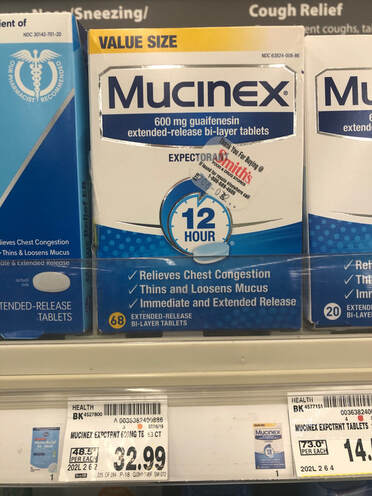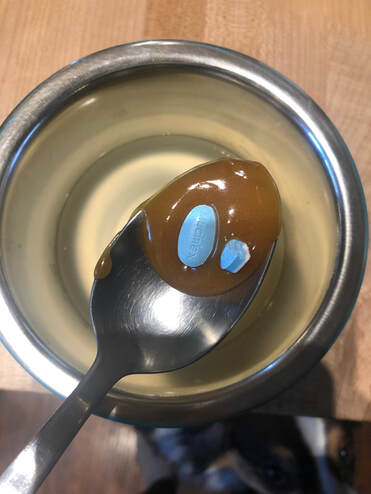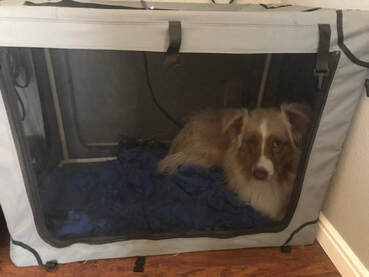|
Unfortunately it looks like this time around we have a decent bout of Canine Cough. There is no need to panic (no need to over wash your paws!). As we've stated before, this is often times a simple cold and can easily be handled by your dogs immune system if they are healthy. However, it's worth knowing the common symptoms and potential risks. Examples of Kennel Cough:
Common Symptoms:The most common characteristic of Canine Cough is, well, the cough. It's typically a deep, heavy cough; often sounding like they just choked a little bit. Other symptoms are as follows:
Reverse Sneezing:
Signs of Pneumonia in Dogs:Not to be alarmed, but there is a small risk that this common dog cold could progress into the much more serious illness of Pneumonia. Here are the most common symptoms:
Home Remedies for Canine Cough: We've done some research as well as talked to our vet, and were told that an over the counter cough suppressant is safe to give to our dogs. Mucinex is the particular cough medicine that we purchased. There are two dosages available, we elected to get the 600mg version because it's easier to break down for smaller dogs. Recommended Dosage: 20mg per pound. Twice daily. If you don't know your dogs weight DO NOT GUESS. A bathroom scale can be used to measure your dogs weight. Weigh yourself first, then pick up your dog and weigh both of you together. Simply subtract your weight to find out their total. If you don't have a bathroom scale, most veterinarian offices will let you weigh your dog without an appointment.  This is the chicken broth we recommend. Dogs can be more sensitive to excessive sodium, so we recommend the low sodium version seen here. Organic is also preferred. This is a nice way to ensure they are hydrated.  This is a spoonful of honey, the Mucinex, and a little bit of the chicken broth mixed with Vitamin C powder. If you 'roll' the pill in the honey, your dog will likely lick it right up without hesitation! Although, if your pup is anything like our Annie, you'll have to go with the old fashioned manual delivery. Which we can show you how to do if you'd like!  Last but not least we have puppy quarantine. This is more to lower their activity level than anything else, but if you do have other dogs it's not a bad idea to keep them mostly separated. This is a prime example of why we cover crate training so adamantly. If your dog enjoys their crate this becomes much less of a punishment and they will actually sleep and rest, which is exactly what we want! Side/back pats:
This is not medical advice, this is experienced based information. Please seek out treatment from your Veterinarian if you feel your dog is in need of medical care.
2 Comments
Yana Salwan
4/1/2021 05:31:17 am
Thanks for the great info
Reply
9/6/2023 09:15:34 am
Nice Content <a href="https://phonemantra.com/unveiling-the-connection-does-mucinex-make-you-sleepy/" >does mucinex make you sleepy</a>
Reply
Leave a Reply. |
AuthorsCarmie & Samantha have a combined 30+ years experience in raising, caring and loving dogs. Archives
July 2022
Categories |
|
Contact us today!
|
Follow us
|
Paw Partner
|
|
[email protected]
435-901-4349 |
Copyright 2015. All rights reserved.

 RSS Feed
RSS Feed